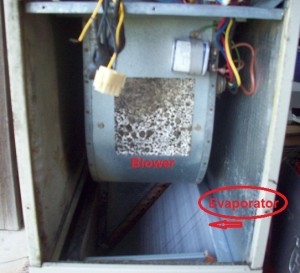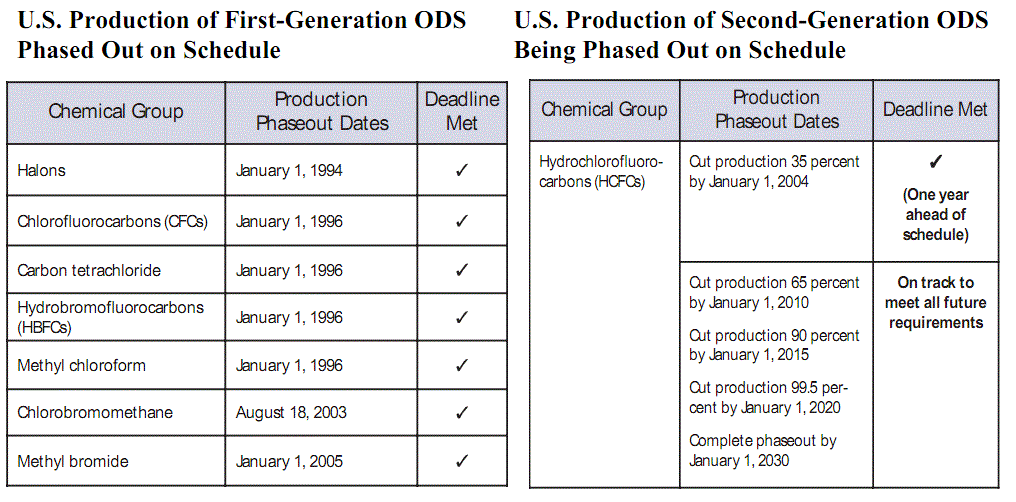AC Components – Evaporator Coils and How They Function In Air Conditioning Equipment
 Air Conditioning Evaporator Coils – Tips From the AC&H Phoenix AC Installation Service Center
Air Conditioning Evaporator Coils – Tips From the AC&H Phoenix AC Installation Service Center
Central air conditioners contain two major cooling components: The Condenser coil and the Evaporator Coil. In the typical system, the condenser is located outside the home or office building. However, the Evaporator coil is normally associated with the furnace component of the air conditioning unit. It is mounted in the junction of the main internal duct system.
Keeping your Mesa or Scottsdale AC system clean and efficient requires yearly inspection and routine maintenance of the functional components, including the condenser and the evaporator coil. Many of the advertised discount HVAC tune-up offers ignore the condition of your evaporator coil. If your current AC inspector and AC tune-up provider fails to open the internal unit, you can bet that they have ignored the importance of a clean evaporator coil.
Ensure that your next Phoenix AC maintenance is performed by a licensed, insured and certified Phoenix air conditioning service center. Contact American Cooling and Heating to schedule a complete AC maintenance service call.
Evaporator Coils and the Split System
The typical central AC system operates as a split system. Thus the unit contains a “hot” side and a “cold” side. The “hot” side is positioned exterior to the home. The “cold” side is in the crawlspace, the attic or sometimes in an internal closet compartment. Core components within each unit section are as follows:
- Hot Side – Typically contains the condensing coil, the fan and the compressor, as well as various electrical switches and capacitors
- Cold Side – Usually consist of a cold coil and an expansion valve, typically assembled as a sub-section of your air handler or furnace system. Home cooling occurs when the air handler forces air through the evaporator coils and then delivers that chilled air throughout your home duct system.
Evaporator Coils – The Process of Home Cooling in Action
Evaporators come in three general configurations: Cased, Uncased and Vertical. Correctly matching the evaporator coil to the specifications of your exact AC unit determines the efficiency and performance of the system. The condenser pipes, evaporator pipes, system ductwork and air handler work together to maximize and evenly distribute the cool air transfer of air throughout your home.
As air from the air handler or furnace passes over the pipes that make up the evaporator coil, heat is absorbed into the pipes. Cooled air is then delivered into the ducting system and distributed throughout the house. Refrigerant within the coils is returned to the external compressor, and then the process starts over again.
Assuming that all systems are evenly matched and working efficiency, the evaporator coil is kept slightly under the dew point but moderately cool. This causes it to condense water vapor from the processed air. The moisture is drained from the system. The cooled area of the home experiences a lower level of humidity.
For further information, read the AC&H detailed heating and cooling glossary.
Phoenix AC Service and Maintenance
Routine system check-ups and maintenance preserve the life of your Mesa air conditioning equipment. Evaporator coils can age, rust or wear down. Proactive system maintenance and upkeep of your Gilbert AC system assures you of efficient system performance, long-term reduction in your energy bill and increased durability of your Phoenix air conditioning equipment.
Homeowners can perform many of the basic heating and cooling maintenance procedures. However, cleaning your evaporator unit and your evaporator coils can result in a damaged system. Don’t make this a do-it-yourself solution without studying the process via a certified training manual.
For quality Phoenix AC installation or services, contact American Cooling and Heating. We are:
- Licensed
- Insured
- Bonded
- Trained for the job
- AND determined to provide superior customer service, including a complete and through heating and cooling maintenance program.
Make sure your home cooling system is performing at maximum capacity. Keep your evaporator coils clean and in peak condition. If the airflow is slow or less cool than it should be, you may need system maintenance right this moment. Call AC&H today. We offer 24-hour same day service.


